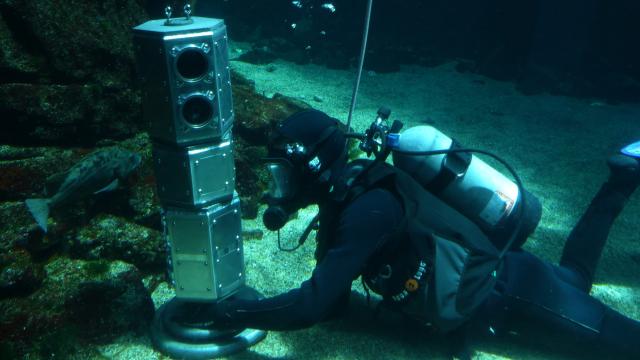The allure of a warm, liquid ocean beneath Europa’s icy surface has inspired science fiction and real NASA missions alike. But if and when we get around to extraterrestrial oceanography, what will our undersea explorers look like?
Probably, a bit like this little guy. Meet BRUIE, the Buoyant Rover for Under Ice Exploration. This autonomously controlled bot is designed to float on the underside of ice sheets, rolling itself around on wheels, snapping photos and collecting data. Last year, BRUIE became the first satellite operated under-ice vehicle, when NASA engineers wheeled it around beneath an ice-sheet near Barrow, Alaska.
Since that successful trial, BRUIE has undergone a series of upgrades, and a second gen version — which looks markedly different from its predecessor — is now almost ready to be set loose beneath the Arctic ice once more. But first, BRUIE’s engineers decided to show it off to tourists at the California Science Center in LA this week while they tested out some new features.
According to NASA:
The new version is longer, has a thicker body and is designed for ocean depths up to about 700 feet (200 metres). The central body contains computers, sensors and communication equipment. On either side of the central section is a “pod,” each with sensors, lights, a camera, batteries, instruments and two motors. The software for this rover is similar to what is being used for Mars Cube One, two communication-relay CubeSats that will launch with NASA’s InSight Mars lander in 2016.
Researchers are currently working to increase the rover’s autonomy and beef up its hazard avoidance, with an eye toward eventually letting the rover survey a frozen lake on its own.
“Our work aims to build a bridge between exploring extreme environments in our own ocean and the exploration of distant, potentially habitable oceans elsewhere in the solar system,” said Kevin Hand, a co-investigator for the rover and planetary scientist at NASA’s Jet Propulsion Lab.
Today: Aquarium tanks. Tomorrow? Distant alien moons.
[NASA]
Top image via NASA /JPL Caltech
